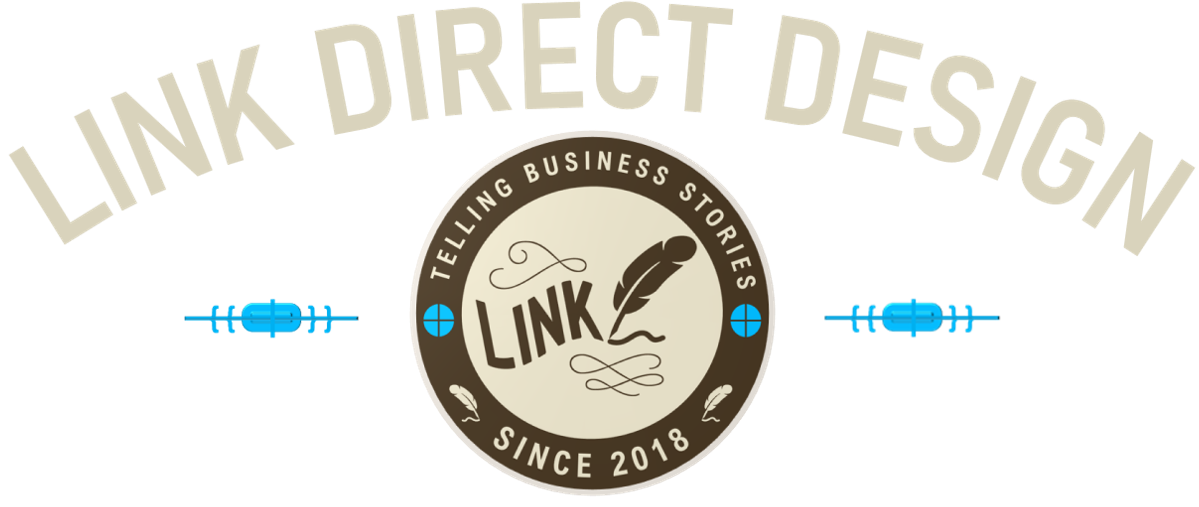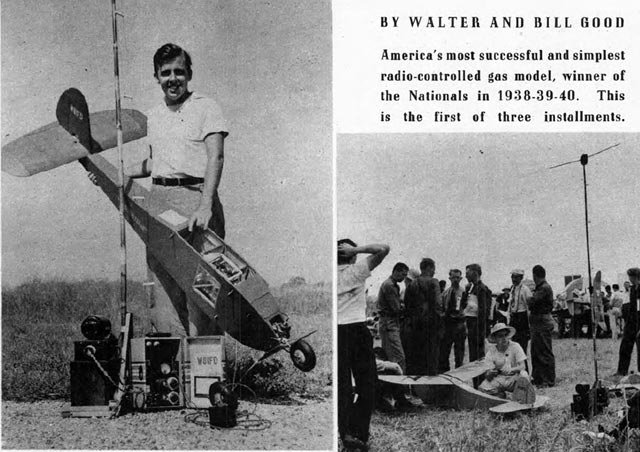How to Get Into the Air with RC Aircraft
RADIO-CONTROLLED FLIGHT IS AN AWESOME HOBBY that has grown by leaps and bounds since the year 2000. Why? Because first and foremost, it has always been fun. Model plane flying began in the 1930’s with small gas engines strapped to home-designed planes with tethers attached to control the plane. The first attempts were similar to how kites fly.
Walter “Walt” Good, “the father of the modern radio controlled aircraft,” works on his Big Guff aircraft in 1940. With it, he and his brother, Bill, won the 1938, 1939 and 1940 Nationals competition. Plans for this vintage RC aircraft are available at Outerzone. Photo from archives of Harry D.
This “control line” flying developed over the years as the desire increased for craftsmen, veterans, and hobbyists to mimic the machines that helped shape the modern world during WW2. Many had been inspired as children in 1927 by Charles A. Lindbergh’s first solo, non-stop crossing of the Atlantic (New York to Paris) in his Spirit of St. Louis. These developments lead to using electronics - large and cumbersome devices at first - that could control the plane’s movement, and large transmitters that could tell the electronics what to do wirelessly!
Origins of Radio Control Flight
Starting in the early 2000s, leaps in technology helped RC aircraft motors perform notably better, and battery chemistry improvements allowed for more power in smaller and lighter packages. Flight electronics - including servos, flight controllers, radios, and receivers - rapidly advanced the ability to control aircraft better and farther away.
Big Guff’s fuselage with a hint at the power plant and inner workings. The transmitter, huge by today’s standards, was amateur radio equipment. Good’s FCC call letters, W8IFD, are proudly displayed in the box he created for portability.
Technology continues making this hobby - one that combines model-building fun and the excitement of flight controlled by you - better and better. And stil today this hobby continues to push that technology to its limits. These improvements help you build faster, better, and are helping minimize the entry cost barrier, creating new opportunities for people to join the hobby.
There is no one-size-fits-all in the RC hobby world. You will discover many variations in types and sizes of aircraft to fly. You will have your choice of buying pre-built or DIY models of varying complexity. There are also more choices than ever for materials from which your models are constructed. It is an exciting time to join the ranks. The RC aircraft world also includes drones, racing, and free flight competitions (also known as 3D flying).
So, with opportunity sometimes come questions. Where to start? How to determine what seems the most interesting? What type of aircraft is the best for learning? Aircraft all have different flight characteristics. Even two of the same models built by two different modelers will have subtle differences, some designed in by their builders.
We are here to help with this great conundrum to have.
So here are some tips to get you headed into the air faster and better.
What kind of plane should I buy?
Like the very best hobbies, RC modeling and flight allow you room to grow. Your first trip to an RC airfield may get you interested in some high speed planes, or some that fly like they do not obey the laws of physics. Planes you would love to be flying yourself. And their experienced pilots will certainly be making them look simple and easy. You may get hooked on one you like. Or maybe all of them!
What you needed to start with.
Jumping right in with the hottest and fastest planes however, is not all it may seem at first. Learning how to fly is difficult, and will take a lot of time, but it will help you build great relationships with both mentors and your peers alike. Building your way into the hobby will assist you in avoiding frustration, and will earn you respect among your local RC hobbyists. but starting at the top is expensive, difficult, and also can be extremely dangerous.
So, some of your first planes – and there will be many as you learn your way into flying – will be, “instructional” looking. And for good reason. The same reason as when you were six, Mom and Dad bought you a bike with training wheels, and not a motorcycle.
What you wanted to start with.
Because rebuilding your plane when it lands using alternative methods to landing gear, or perpendicular to its intended flight path cuts short the fun of learning to fly. There are planes that are well-suited to learning, and they are designed to be more forgiving for beginner learning. But take it from us, you will be thrilled, all the same. There is nothing like the feeling of your first RC flight!
Before you begin looking for your own aircraft to fly, take a trip on the weekend to a local airfield or flying club. More often then not you will find people skilled and knowledgeable who will be more than willing to figure out how to get you your first flight. Many clubs even have planes specifically for this! And you wont have to worry about accidentally crashing someones plane. There are ways to make your instructor able to take control at any time, commonly referred to as a buddy box system.
Selecting Your First Plane(s)
Choose a plane that has simple functions, or fewer “channels.” The more functions, the more things you need to learn at once. Instead, you want to keep it to just what is needed for flight to start getting the hang of it. Three channels are a great way to begin. Those will include rudder, elevator and throttle. Check out the illustration to get an idea of how that works.
Choose a lower speed plane, or “scale speed”. Your reaction times as you are learning will be considerably slower than after you have gained experience. Speed is not only harder for you to learn to deal with, but might even be dangerous to others as well. You don’t need to go super fast to have a great time.
Allow yourself to grow in skill by starting with something you can master.
Choose a design and materials that are easy to fix. When you are learning you will be making duct tape and glue repairs at the field to keep on flying. A highly detailed model you spent weeks on the build is probably not something you want to learn with if you want to be flying more than rebuilding. Foam board and pre-formed foam planes (foamy’s) are a great option for learning that takes this principle into account. They are light, spongy and therefore have a “bounce factor” built in. In other words, you will get some breaks or easy fixes with these materials.
Look for a higher dihedral wing. This is a fancy way of saying when the plane roles, the wing is designed to make the plane want to return to normal, level flight as soon as possible. A dihedral wing makes a shallow “V” shape when viewed from the front.
Look for a high wing design, because its combination of dihedral and low center of gravity makes it the most self-correcting design. If you take your hands off the controls, the high wing designed aircraft “wants” to fly straight and level by its aerodynamic characteristics.
Be practical as you begin your RC journey. It will most likely improve your experience. Fighter jets, acrobatic planes and the World War II scale replicas are very exciting, just as three examples. However, just remember the pilots who actually flew those aircraft at full scale probably started out in something like a Curtiss Jenny or a Piper Cub, planes that are training icons and look the part. More recent pilots may have started out in a Diamond DA20, a modern but equally practical design. Choosing a simple-to-learn plane with stable flight characteristics is a universal starting point in aviation as well as RC aircraft. We will help you understand more about this in other articles.
Bottom line, a simple, modest-sized and modest-speed plane with just three controls and a impact forgiving design is a great choice to get started. We recommend foam board and pre-formed foam planes (including the flying wing) that will help you with easier repairs and getting some impact resistance or minor damages you can tape or glue back together more often. They go together faster, and we are working on designs that will help the entry-level modeler produce better results both more quickly and more easily - even if you are not the most artistic or “handy” person in your family.








